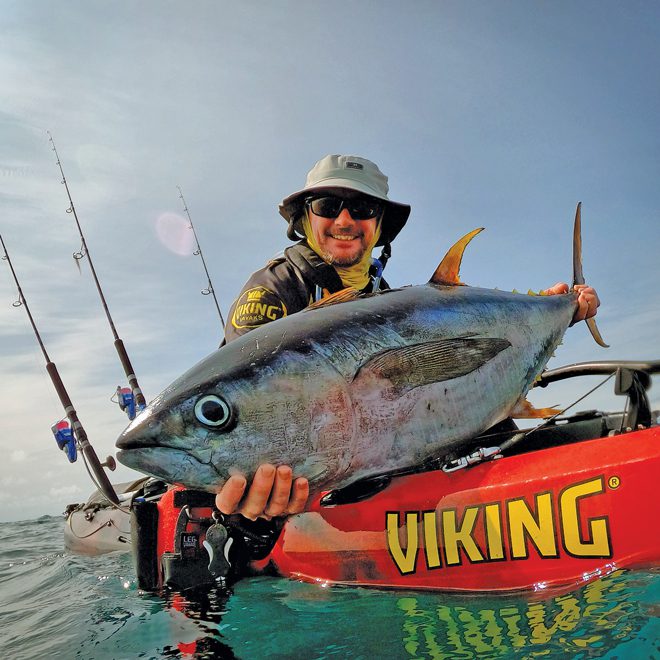Nervous bait appears like rain on the surface of the water before out of nowhere the attack comes from both below and above. Fish fins and teeth carve up the surface of the water and birds descend from above, taking advantage of the hapless baitfish that have nowhere left to run. A quick cast into the melee, a few fast cranks of the handle, the rod buckles and the drag starts to sing that pelagic song as line rapidly disappears off the reel. Spinning mackerel tuna

Welcome to spinning for mackerel and tuna. Tuna and mackerel are species that I chased more frequently back in the day, and I am only now getting back into them again, thanks to a friend Sean and his daughters – who are pumped about chasing these speedsters for sport and a feed. In this article I want to outline some of the gear, techniques and tips that work for us when chasing mackerel and tuna through the summer months. Spinning mackerel tuna
Beacons, birds, bust ups and bait
We are chasing the school and spotted mackerel and tuna from tinnies, so generally pick fairly good weather days – this can assist with spotting bait on the surface appearing as ripples or ‘nervous’ water, along with picking up on fish busting up on bait even at a distance. This is especially true of mackerel which can present as short and punchy chopping, right on the surface and much less pronounced when compared to tuna that are at times throwing themselves out of the water. Spinning mackerel tuna

If the water is rough and white capped, then it’s harder to visually locate bait and bust ups, so we will often rely on spotting feeding birds or troll previously productive areas with metal slugs, stickbaits and diving minnows until we find fish.
Another method of locating mackerel is to focus on the beacons and marker posts that create eddies and attract bait. The amount of current will often impact where you cast – make casts past the post, allowing the lure to sink down to the bottom or to baitfish spotted on the sounder and then retrieve to represent a fleeing or injured baitfish and attract the strike.
In less flow or with heavier presentations, you can also cast to the down-current side of the post, again allow the lure to sink and then commence your retrieve. For open water schools of mackerel and tuna busting up, it’s a balance between being close enough to get your lure in there, while at the same time not spooking them. These fish will often ball bait schools up into the wind, so you can use the wind to your advantage.

Stop upwind of the approaching school, throw long casts with the wind and hope that the school moves towards you. Some days fish won’t care where you are and will almost headbutt the boat, while on other occasions you can barely get within casting distance and they’re gone… making for some fairly frustrating fishing. Keep an eye on the sounder too as fish may appear below you and eat a lure if you get it to them.
 Bush 'n Beach Fishing Magazine Location reports & tips for fishing, boating, camping, kayaking, 4WDing in Queensland and Northern NSW
Bush 'n Beach Fishing Magazine Location reports & tips for fishing, boating, camping, kayaking, 4WDing in Queensland and Northern NSW








